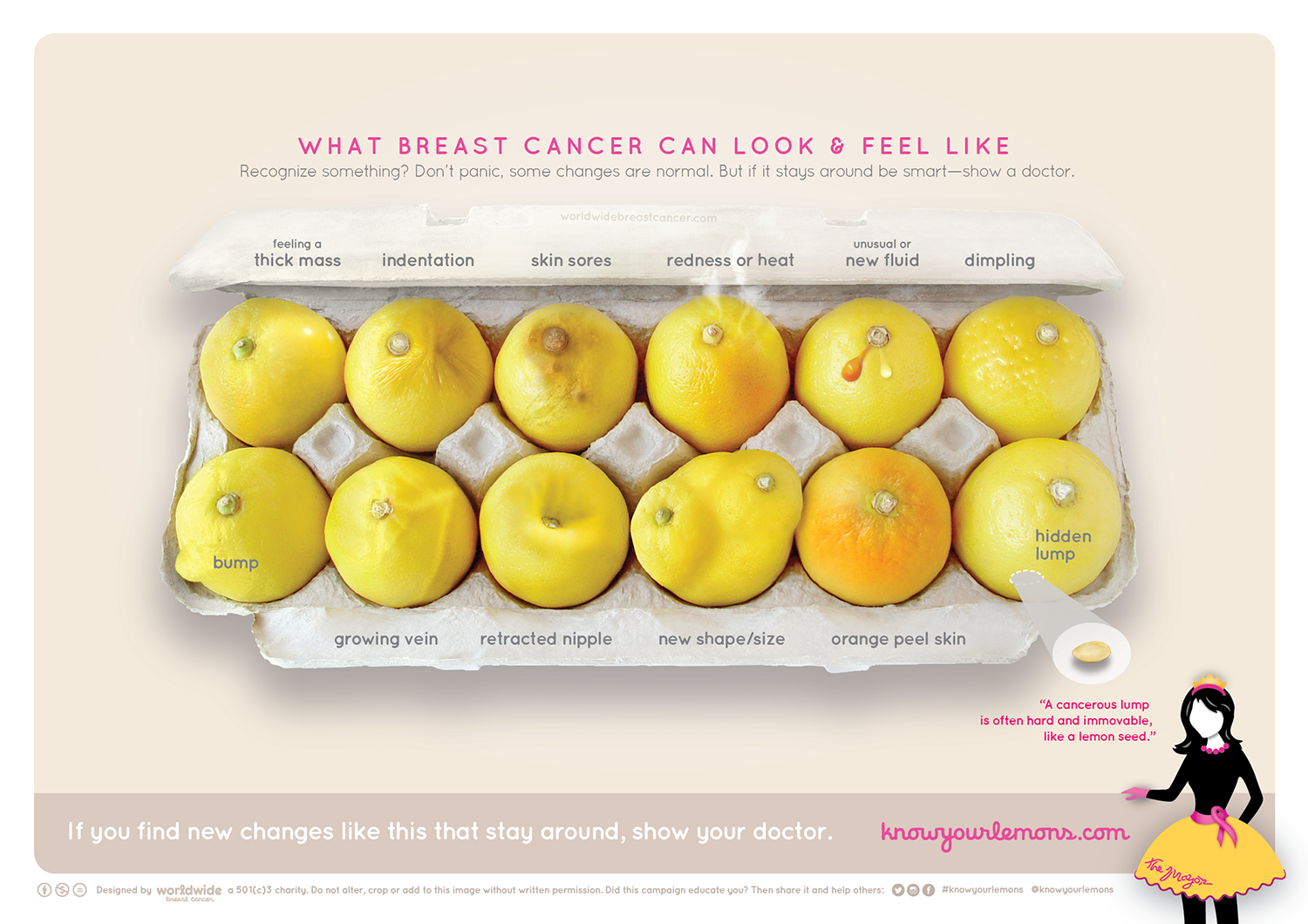Lumps and bumps in breast tissue are well-known as early warning signs of breast cancer, but a viral marketing campaign, based around lemons, is helping women to identify other lesser known signs to look out for.
The campaign from Worldwide Breast Cancer aims to help women identify new changes in their breast shape, size, texture and nipple discharge, and encourages all women to perform regular self-examination of their breasts. At the heart of this campaign is a box of lemons, cleverly modified to represent 12 signs that all women should be aware of.

A mammogram can detect a lump long before it can be felt
Breast lumps, dimpling and retracted nipple, are amongst some of the signs represented in the campaign, which later goes on to highlight what to feel for during your breast examination, what you should do if you are worried about anything you find, and the importance of regular mammograms.
“We are unlocking the potential of visuals to tackle problems with breast cancer that overcome the barriers of low literacy, taboo and fear around the world” says the team at Worldwide Breast Cancer. This is of huge importance as catching breast cancer early leads to a higher chance of beating it.
What are the symptoms of breast cancer?
Though the most common symptom of breast cancer is a lump, there are several changes that a women should look out for:
- Definite lump
- Nipple discharge
- Inverted nipples
- Dimpling of breast skin
- Rashes around the nipple (similar to eczema)
For more on this, see our Breast Cancer FAQs
A breast lump isn't always cancer
If you’ve found something during your breast examination, visit your doctor as soon as possible: it’s not always bad news. Most breast lumps are not cancer. You may be diagnosed with a benign breast lump, but “don’t worry” says Consultant Breast Surgeon Mr Simon Marsh “Benign lumps are not cancerous and usually can safely be left alone.”
For information on other types of lumps read about soft tissue tumours and our neck lump FAQs









